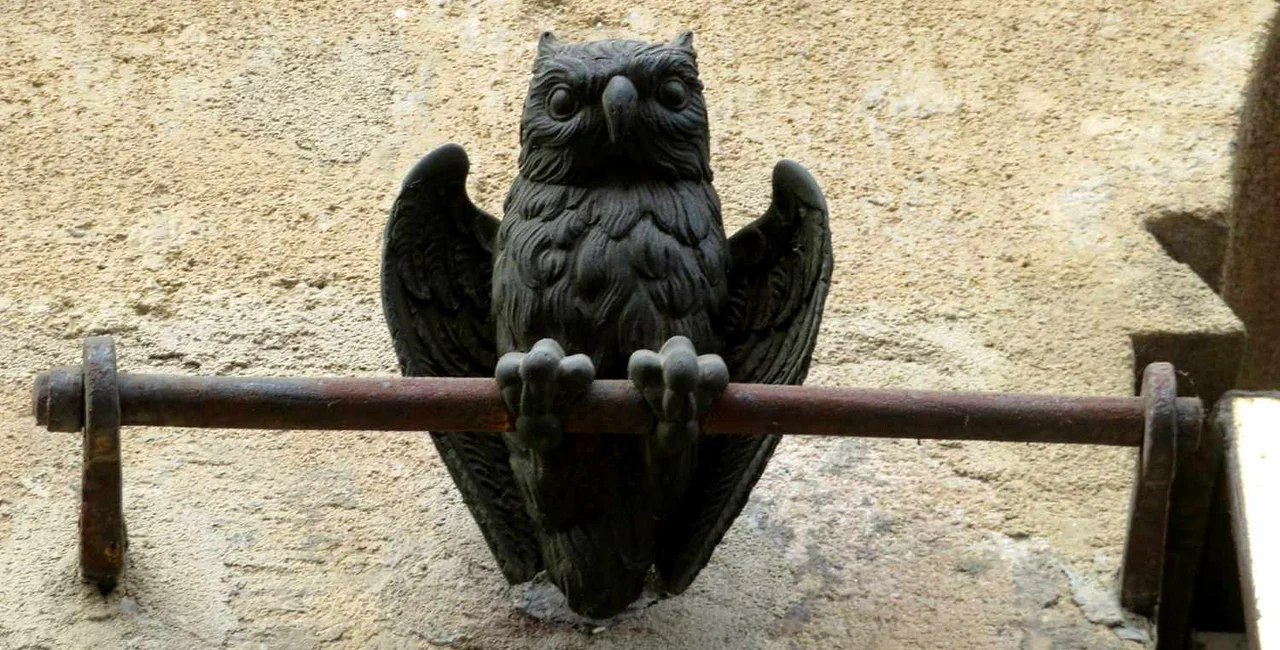People may recognize the Palác Platýz for its courtyard cafe and convenient shortcut from Národní třída to Uhelný trh. But it has quite a bit of history — including the execution of a conspirator, a drunken army in its beer-filled cellar, lodging for half of the writing team of Don Giovanni, and an era filled with traveling entertainers.
The most curious thing about the building at Národní 416/37 on the border of Prague’s Old Town, is a metal owl on a rod, just to the left of the main entrance on Národní třída. While the owl always looks forward now, some 200 years ago it would signal whether there was parking space in the palace stables. If the own was turned downwards, the courtyard stables were full.
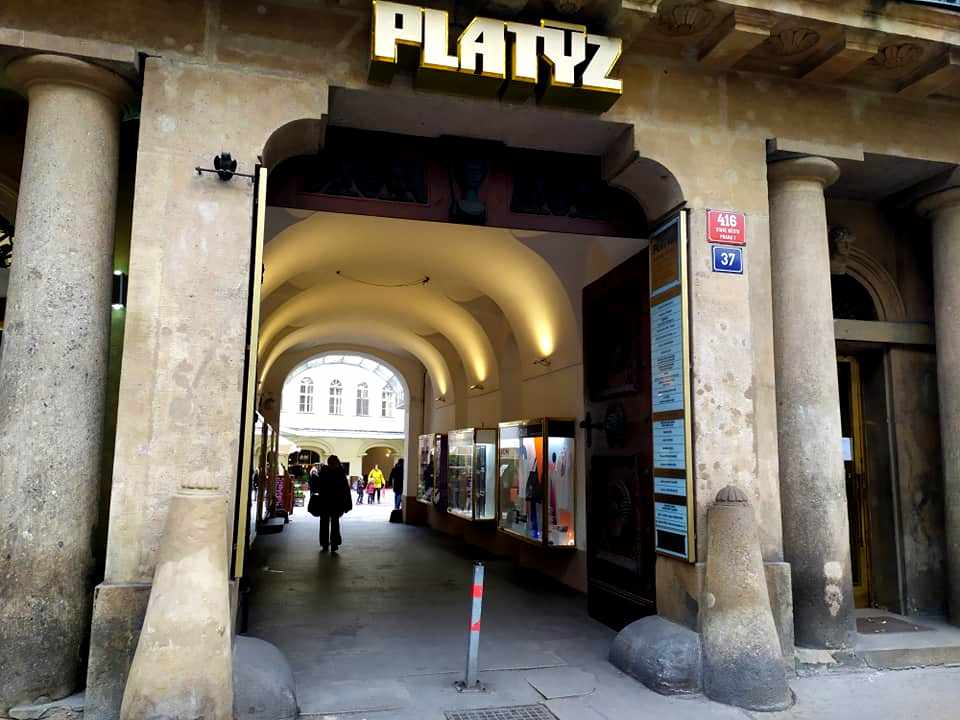
More evidence of the stables can be seen on the Uhelný trh side. The large stone cone-like bollards by the door were to keep carriages from damaging the entryway.
In terms of the history of the palace, the owl is a relatively recent addition. The roots trace back to the reign of Emperor Charles IV, although it looked quite different then.
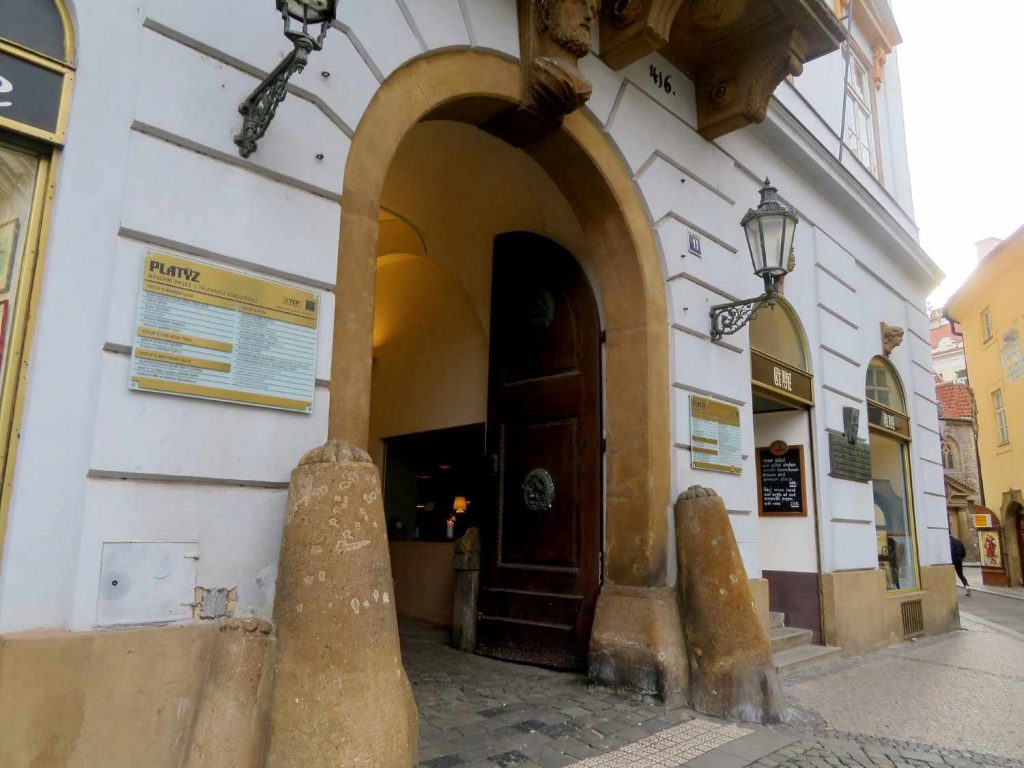
Palác Platýz was founded on or about 1347 on the site of three houses near the wall that marked the border of Old Town. This was the same time that Charles IV founded New Town in an effort to expand the Prague. The place today is technically in Old Town, and New Town starts on the other side of Národní třída.
In the chronicle Annales Bohemorum by Václav Hájek z Libočan, the building’s original appearance is described as a castle with a high tower, with its main facade facing Uhelný trh.
Duke Fridrich Burgundský (Friedrich of Burgundy) was the first of many owners. The son of an official got caught up in some political conspiracy against the duke, and was beheaded in the market front of the building.
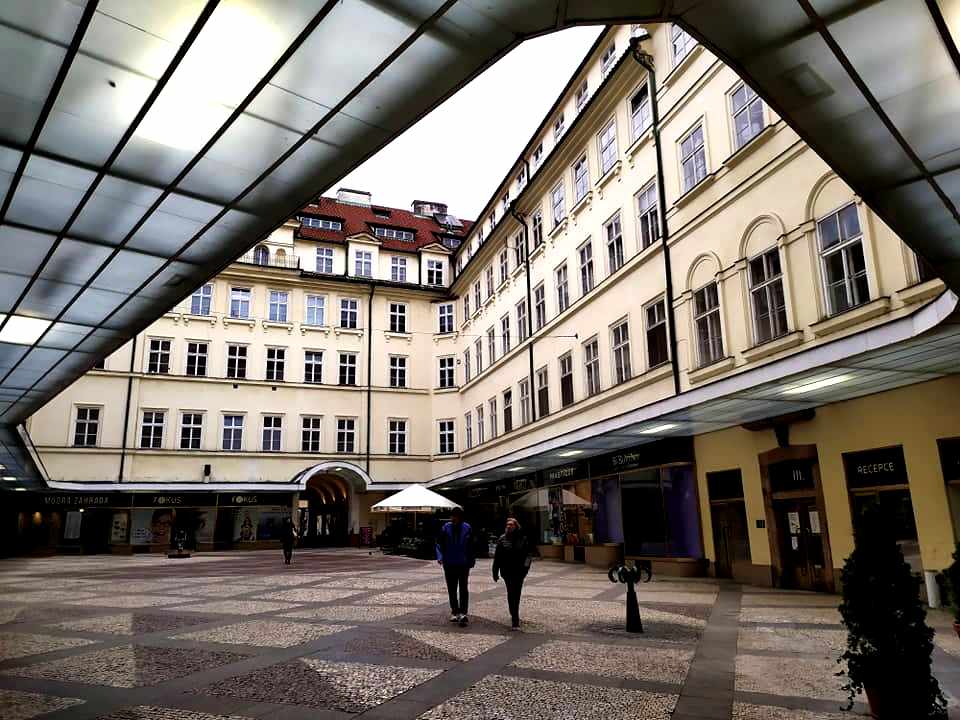
Jan Bradatý ze Stříbra — a wealthy malt maker and pukrmistr, a position similar to mayor — bought the palace some time around 1405, and three years later a scholarly debate about English philosopher John Wycliffe took place there. Wycliffe was a big influence on the Hussite movement, and wars between the Hussites and Catholics would last from 1419 to 1434. Bradatý supported the Hussites, and died due to injuries after the Battle of Ústí nad Labem in 1426.
In 1586, the palace was purchased by Jan Platejs z Plattenštejna, an imperial council member and secretary to Emperor Rudolf II. He remodeled the building the Renaissance style and changed the name to Palác Platýz. A loggia was built in the first floor inside the courtyard.
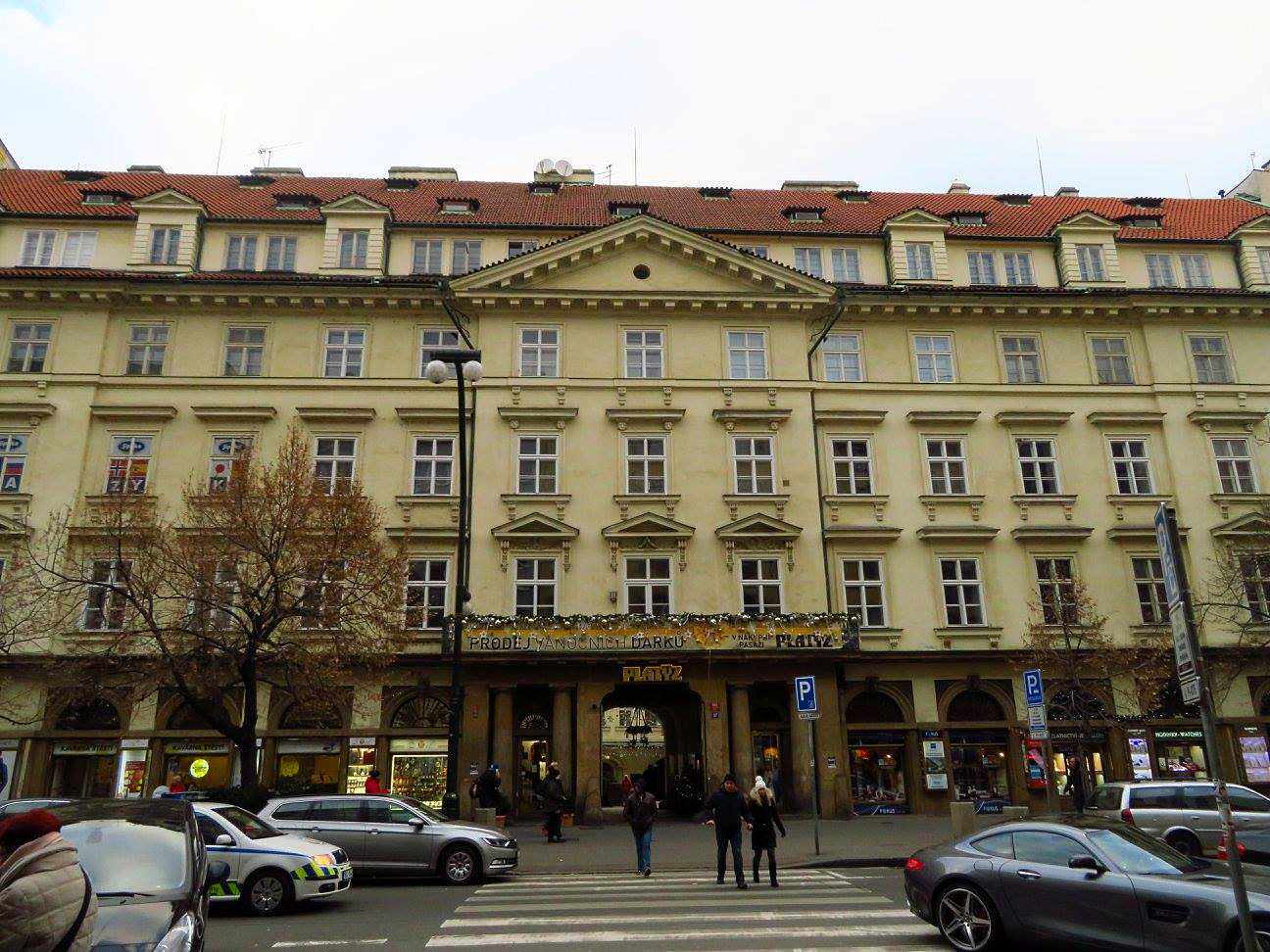
Renovations were continued by his son, Jan Arnošt Platajs, who later became archbishop of Olomouc. A few details such as a ceiling beam and some murals are preserved inside but not accessible to the general public. There is a large two-story rectangular hall from this time.
During the Prague Uprising of 1611, someone supposedly shot from a palace window at a unit of the army of Passau. A chronicler at the time wrote the army broke into palace to seek revenge. While searching the cellars for the shooter, they found barrels of fermenting beer. The revenge plan was set aside and they drank until evening, and then finally staggered off to wherever their barracks were.
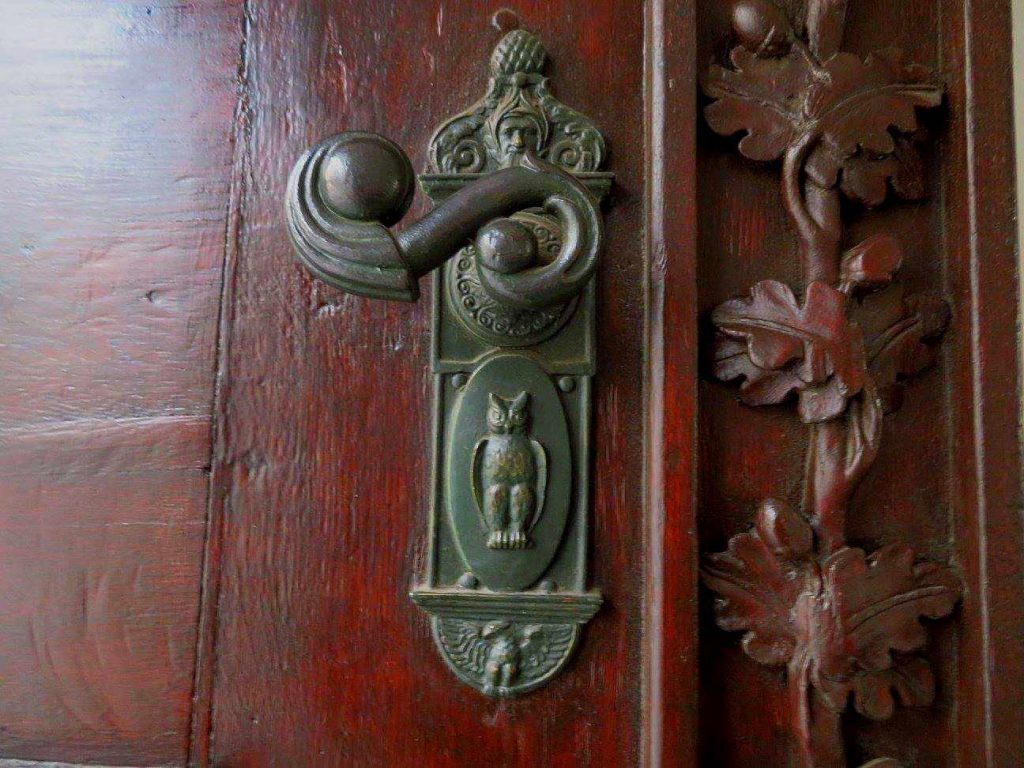
It wasn’t a total loss. Jan Arnošt Platejs got a tax exemption for the palace from the emperor and also got the right to rent accommodations to pilgrims and a license to sell wine imported from Hungary, Italy and other places.
Count Jan ze Šternberka took possession of the palace in 1637, instigating a Baroque remodeling that created the short cut between Uhelný trh and Národní třída.
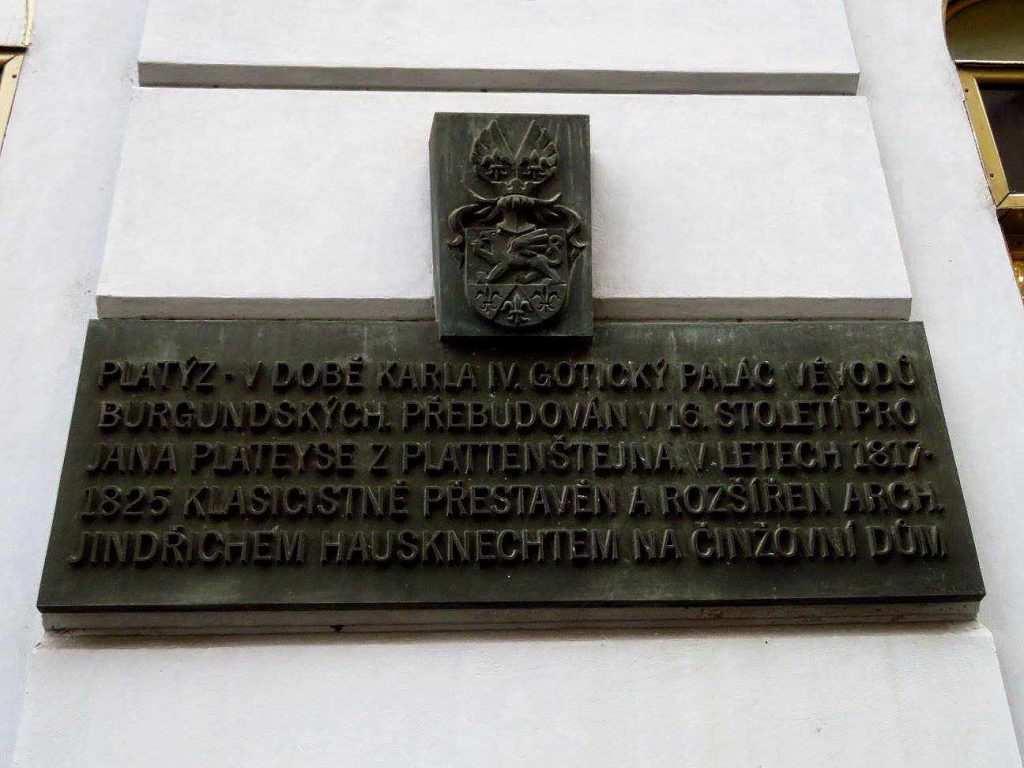
The building became a social hot spot starting in 1715, when Jan Leopold Paar married Marie Terezie Violanta ze Šternberka. A bust of Jan Leopold Paar can be found by a staircase on the Národní třída side. The building also now hosted a famous fencing school and post office.
There were balls, and many artists found a home there. Highlights include a man who balanced a ladder on his face while playing a drum and a male tightrope walker who would strip above the crowd.
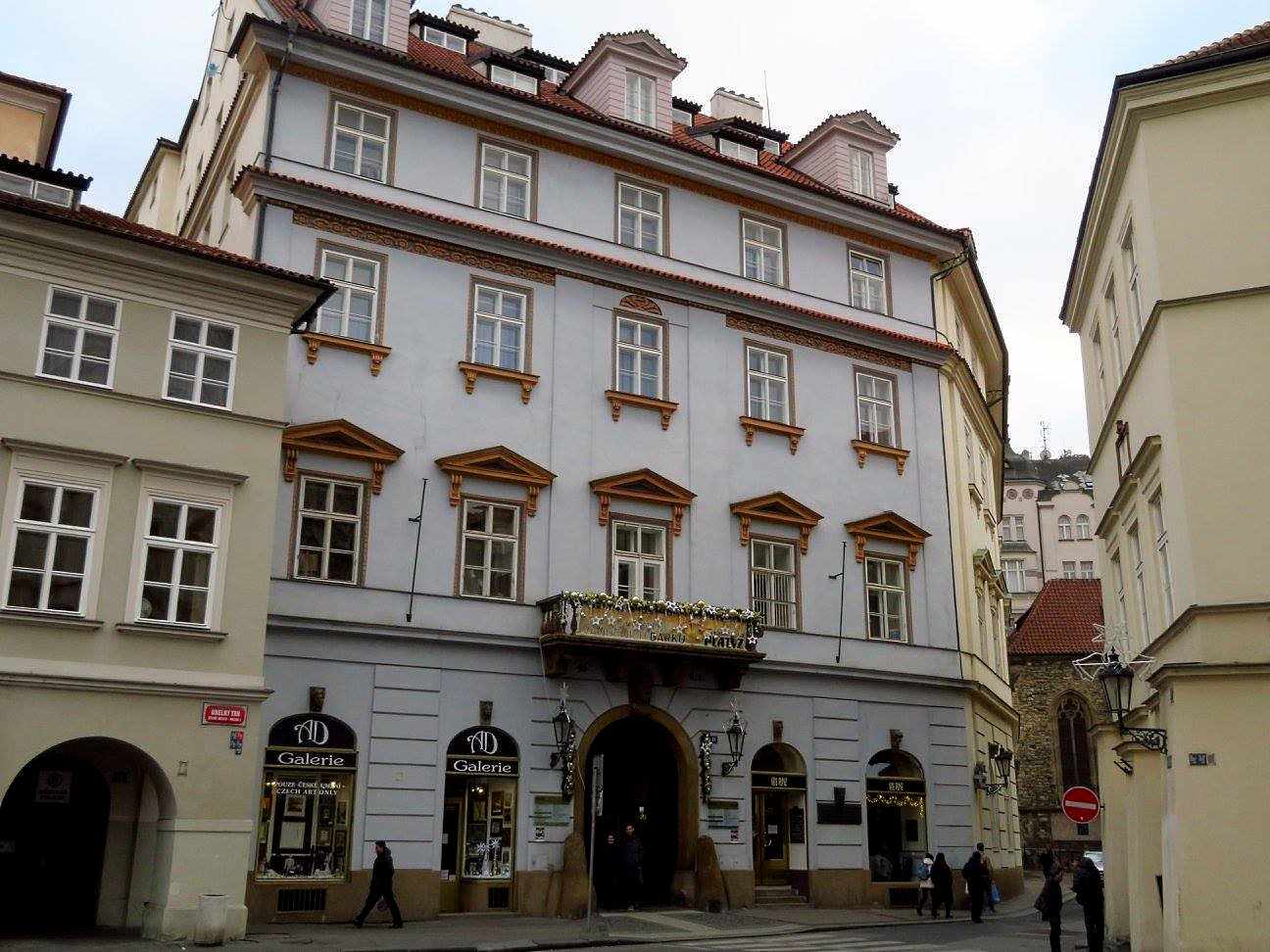
Opera librettist Lorenzo da Ponte stayed at the palace in 1787 while Mozart was across the street at a house called U Tří zlatých lvů. In these cellphone free days, the two would shout across the street through open windows to discuss how the text would match the music of Don Giovanni.
Jakub Wimmer took over in 1797. He became wealthy as a military supplier and contractor. His contribution was the Wimmer Fountain at Uhelný trh and two rows of trees on Národní třída.
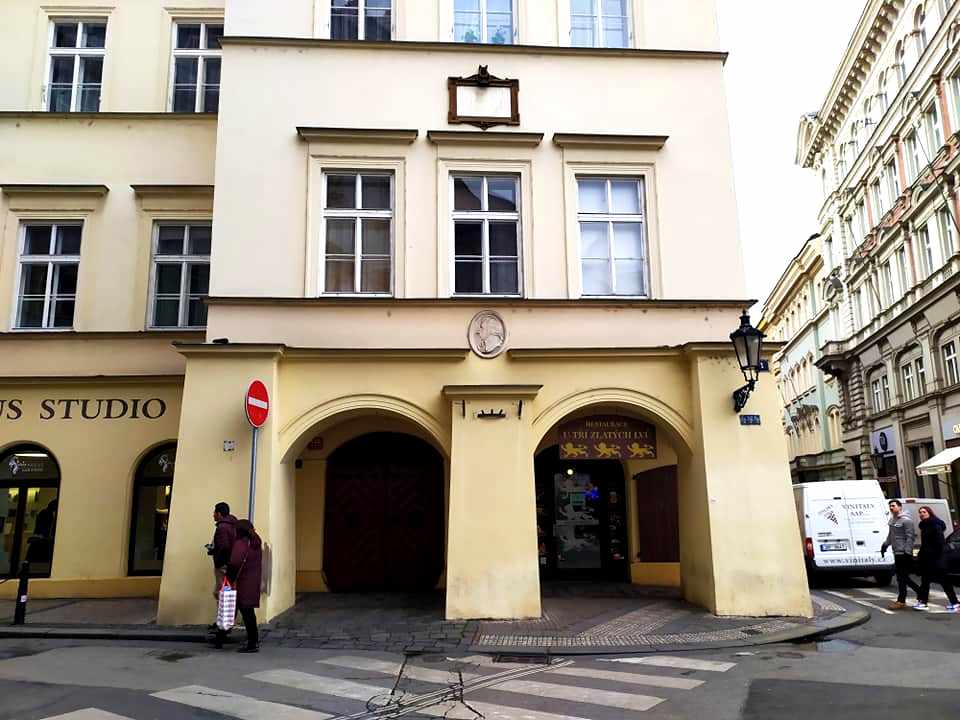
Sir František Daubek, who also made a fortune as a military supplier, bought the palace in 1813 and rebuilt it into a profitable apartment building, the first of its kind in Prague. Several buildings were joined together around a stable for 55 horses in the central courtyard.
Architect Jindřich Hausknecht moved the facade to Národní třída and redesigned it in the Empire style to unify all the joined buildings. The stone portal with four Doric columns and the traffic owl were added. The ornate wooden doors that exist today were added at this time.

The Slavia Insurance Bank bought palace in 1938, adding another floor for offices and creating the current partly covered public courtyard. The last changes were in 1986 when a fountain and a bronze statue called Girl by sculptor Miloš Zeta were added.
Remains of the 13th century fortifications are preserved in the cellars, parts of which have survived unscathed through all the various renovations. These are unfortunately not open to the public.












 Reading time: 5 minutes
Reading time: 5 minutes 